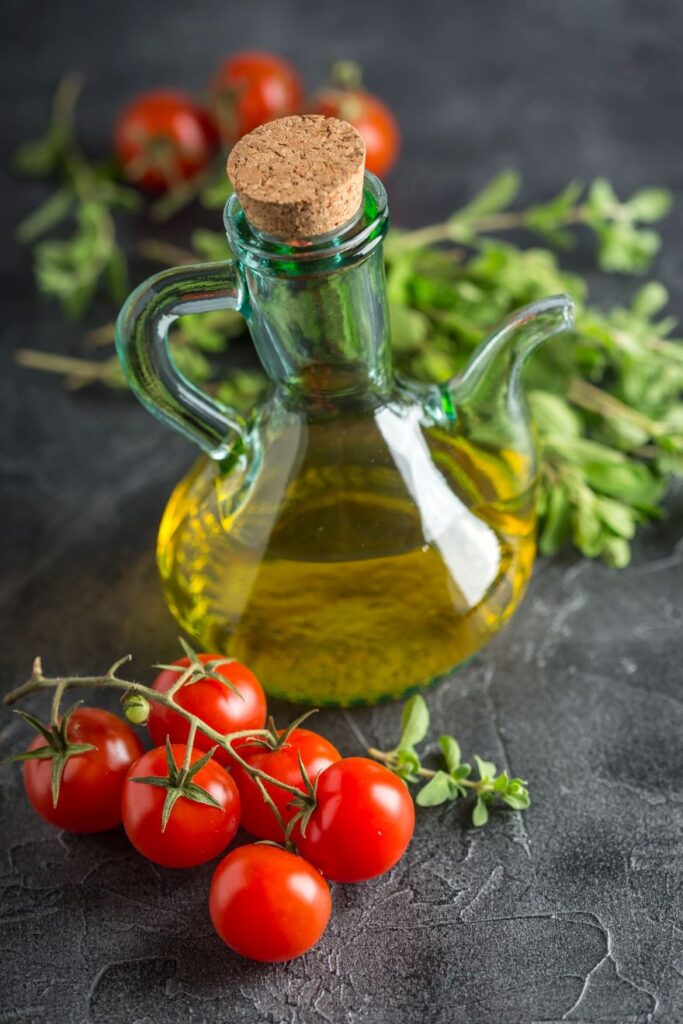White Balsamic Vinegar
As a food enthusiast and advisor, I have come to appreciate the unique flavor and versatility of white balsamic vinegar. This vinegar has a lighter, sweeter taste than traditional balsamic vinegar, making it ideal for many dishes. In this article, I’ll share everything you need to know about balsamic vinegar, including its history, production, uses, and health benefits.
What is White Balsamic Vinegar?
White vinegar derives from white Trebbiano grapes, similar to traditional balsamic vinegar. Producers age the vinegar for only one year and do not age it in wooden barrels unlike traditional balsamic vinegar. This results in a lighter color and sweeter flavor than traditional balsamic vinegar.
Background history on Trebbiano grapes
Winemakers commonly use White Trebbiano grapes to produce the white vinegar, as well as other wine and vinegar varieties. White Trebbiano grapes possess high acidity, which provides them with a tangy and refreshing flavor. Winemakers can utilize Trebbiano grapes to produce a range of wines, from light and crisp to full-bodied and complex. The most commonly associated region with white Trebbiano grapes is Italy, where cultivators have grown them for centuries. White Trebbiano grapes are a valuable ingredient in the world of wine and vinegar, highly prized for their unique flavor and versatility.
Cultivators grow Trebbiano grapes in various regions worldwide, including Italy, France, Spain, and Argentina. These grapes thrive in warm, sunny climates and require vineyards situated on hillsides or slopes to ensure proper drainage. Growers typically use trellises or wire systems to support the vines and guarantee even exposure to sunlight. The growers harvest the grapes by hand or machine, depending on their preference and vineyard size. After harvesting, producers press the grapes to extract their juice, which they then use to make wine or vinegar. Growing Trebbiano grapes requires careful attention to detail and a deep understanding of the crop’s unique needs.
History of White Balsamic Vinegar
White balsamic vinegar is a relatively new addition to the market compared to traditional balsamic vinegar made in Italy for centuries. Producers introduced the vinegar in the 1980s as a lighter and milder alternative to traditional balsamic vinegar.
How is White Balsamic Vinegar Made?
Producers ferment white Trebbiano grapes into wine to create white balsamic vinegar. Producers age the wine in stainless steel barrels for one year, allowing the vinegar to develop its unique flavor and aroma. After aging, they filter the vinegar and bottle it.
What Does White Balsamic Vinegar Taste Like?
The vinegar has a light, sweet, and tangy taste, with a mild acidity. It has a pale golden color and a thinner consistency than traditional balsamic vinegar. This white vinegar has a milder taste than traditional balsamic vinegar, making it ideal for those who prefer less intensity.

Health Benefits of White Balsamic Vinegar
Like other types of vinegar, white vinegar offers several potential health benefits. Here are some of the most notable benefits:
- Lowers Blood Sugar Levels: It can help manage diabetes by lowering blood sugar levels, according to studies. Vinegar’s acetic acid has demonstrated an ability to enhance insulin sensitivity and decrease the rate at which glucose is absorbed into the bloodstream.
- Aids Digestion: It can also help to improve digestion by increasing the acidity of the stomach. This can help to break down food more effectively and prevent indigestion and other digestive issues.
- Boosts Immune System: White vinegar contains antioxidants, which can help to boost the immune system. This can help to reduce the risk of chronic diseases such as cancer and heart disease.
- Promotes Weight Loss: Balsamic vinegar may also help to promote weight loss by reducing appetite. Vinegar’s acetic acid suppresses appetite, resulting in weight loss by reducing calorie intake.
Other Potential Health Benefits
In addition to the benefits listed above, white vinegar may also help to improve heart health, reduce inflammation, and improve skin health.
How to Use White Balsamic Vinegar in Cooking
Chefs and home cooks alike can use vinegar as a versatile ingredient in a variety of dishes. Here are some suggestions for incorporating white vinegar into your cooking:
- Salad Dressings: Balsamic vinegar makes a great base for salad dressings, especially those with lighter greens such as arugula or spinach. Try mixing it with olive oil, honey, and Dijon mustard for a simple and delicious dressing.
- Marinades: Home cooks and chefs can also use white vinegar as a marinade for meats and vegetables. Its light, sweet flavor pairs well with chicken and fish.
- Sauces: The vinegar can be used to add flavor to sauces and gravies. Try mixing it with butter, garlic, and herbs for a delicious sauce to serve over pasta or vegetables.
- Glazes: White vinegar makes a great glaze for roasted vegetables or grilled meats. Try mixing it with honey and soy sauce for a sweet and savory glaze.
- Desserts: Vinegar can even be used in desserts to add a unique flavor. Try using it in a fruit salad or drizzled over vanilla ice cream for a sweet and tangy treat.
Tips for Choosing and Storing White Balsamic Vinegar
When selecting white vinegar, consumers should seek out high-quality products that use Trebbiano grapes and age for a minimum of one year. Avoid products that contain added sugars or artificial flavors. Store it in a cool, dry place away from direct sunlight, and tightly seal the bottle after each use to prevent oxidation.
Frequently Asked Questions
- Is white balsamic vinegar the same as regular balsamic vinegar? White balsamic vinegar differs from regular balsamic vinegar. Producers make the white vinegar from white Trebbiano grapes and age it for a shorter period than traditional balsamic vinegar. This process results in a lighter color and a sweeter flavor.
- Can I use white balsamic vinegar in place of regular balsamic vinegar in recipes? Yes, you can use white balsamic vinegar as a substitute for regular balsamic vinegar in most recipes.
- What are some health benefits of white balsamic vinegar? This vinegar may help to lower blood sugar levels, aid digestion, boost the immune system, and promote weight loss.
- How should I store white balsamic vinegar? Store the vinegar in a cool, dry place away from direct sunlight, and tightly seal the bottle after each use to prevent oxidation.
- What are some ways to use white balsamic vinegar in cooking? Chefs and home cooks can use white vinegar in salad dressings, marinades, sauces, and glazes for meats and vegetables.
- Does white balsamic vinegar have any side effects? While the vinegar is generally considered safe, consuming large amounts may cause digestive issues such as stomach upset and diarrhea.
- Is white balsamic vinegar gluten-free? Yes, it is gluten-free, as it is made from grapes and does not contain any wheat or other gluten-containing grains.
- Can white balsamic vinegar be used for cleaning? While vinegar is often used as a natural cleaning agent, white vinegar is not recommended for cleaning as it may stain surfaces due to its color.
Conclusion
White balsamic vinegar is a delicious and versatile ingredient with a unique flavor and several potential health benefits. Whether you’re using it in salad dressings, marinades, or sauces, white vinegar will surely add a light and sweet touch to your cooking. It is a great alternative to traditional balsamic vinegar for those who prefer a milder taste. Look for a high-quality product, experiment with different recipes, and enjoy the many benefits of this delicious ingredient. Incorporating balsamic vinegar into your cooking can add a new dimension of flavor to your dishes and provide potential health benefits at the same time.


 Previous Post
Previous Post Next Post
Next Post